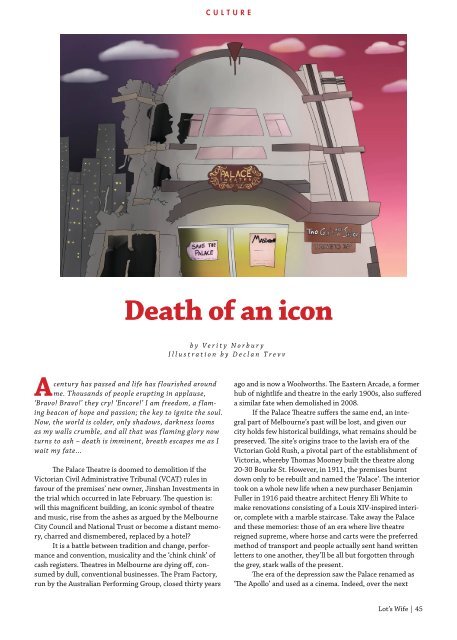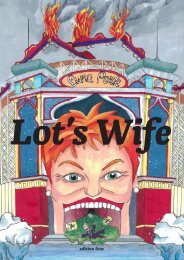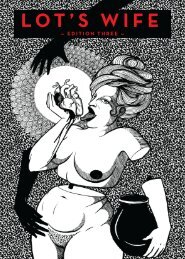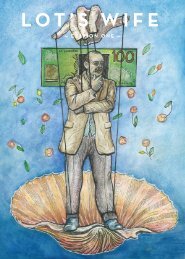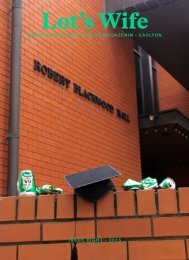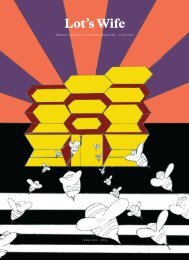Lot's Wife Edition 2 2016
You also want an ePaper? Increase the reach of your titles
YUMPU automatically turns print PDFs into web optimized ePapers that Google loves.
CULTURE<br />
Death of an icon<br />
by Verity Norbury<br />
Illustration by Declan Trevv<br />
century has passed and life has flourished around<br />
A me. Thousands of people erupting in applause,<br />
‘Bravo! Bravo!’ they cry! ‘Encore!’ I am freedom, a flaming<br />
beacon of hope and passion; the key to ignite the soul.<br />
Now, the world is colder, only shadows, darkness looms<br />
as my walls crumble, and all that was flaming glory now<br />
turns to ash – death is imminent, breath escapes me as I<br />
wait my fate…<br />
The Palace Theatre is doomed to demolition if the<br />
Victorian Civil Administrative Tribunal (VCAT) rules in<br />
favour of the premises’ new owner, Jinshan Investments in<br />
the trial which occurred in late February. The question is:<br />
will this magnificent building, an iconic symbol of theatre<br />
and music, rise from the ashes as argued by the Melbourne<br />
City Council and National Trust or become a distant memory,<br />
charred and dismembered, replaced by a hotel?<br />
It is a battle between tradition and change, performance<br />
and convention, musicality and the ‘chink chink’ of<br />
cash registers. Theatres in Melbourne are dying off, consumed<br />
by dull, conventional businesses. The Pram Factory,<br />
run by the Australian Performing Group, closed thirty years<br />
ago and is now a Woolworths. The Eastern Arcade, a former<br />
hub of nightlife and theatre in the early 1900s, also suffered<br />
a similar fate when demolished in 2008.<br />
If the Palace Theatre suffers the same end, an integral<br />
part of Melbourne’s past will be lost, and given our<br />
city holds few historical buildings, what remains should be<br />
preserved. The site’s origins trace to the lavish era of the<br />
Victorian Gold Rush, a pivotal part of the establishment of<br />
Victoria, whereby Thomas Mooney built the theatre along<br />
20-30 Bourke St. However, in 1911, the premises burnt<br />
down only to be rebuilt and named the ‘Palace’. The interior<br />
took on a whole new life when a new purchaser Benjamin<br />
Fuller in 1916 paid theatre architect Henry Eli White to<br />
make renovations consisting of a Louis XIV-inspired interior,<br />
complete with a marble staircase. Take away the Palace<br />
and these memories: those of an era where live theatre<br />
reigned supreme, where horse and carts were the preferred<br />
method of transport and people actually sent hand written<br />
letters to one another, they’ll be all but forgotten through<br />
the grey, stark walls of the present.<br />
The era of the depression saw the Palace renamed as<br />
‘The Apollo’ and used as a cinema. Indeed, over the next<br />
Lot’s <strong>Wife</strong> | 45


